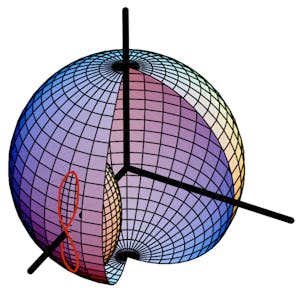The Kinematics: Describing the Motions of Spacecraft course delves into the precise prediction and control of spacecraft, satellites, and space stations' movements in 3D space. It covers essential topics such as particle kinematics, rigid body kinematics, and static attitude determination.
The course starts with an introduction to particle kinematics, where students learn to differentiate vectors as seen by rotating frames and apply the Transport Theorem to solve kinematic particle problems. The subsequent modules explore rigid body kinematics in detail, covering directional cosine matrices, Euler angles, quaternions, and Classical and Modified Rodrigues parameters. The course concludes with a focus on static attitude determination, where modern algorithms for predicting and executing relative orientations of bodies in space are discussed.
Throughout the course, students will develop the ability to differentiate vectors as seen by rotating frames, translate between various sets of attitude descriptions, integrate attitude descriptions numerically to predict orientations over time, and determine attitudes from a series of heading measurements. By the end of this course, students will possess the knowledge and skills necessary to predict and control the motion of spacecraft and other bodies in space accurately.
Certificate Available ✔
Get Started / More Info
The Kinematics course is divided into four modules, covering particle kinematics, rigid body kinematics, and static attitude determination. Students will gain a comprehensive understanding of predicting and controlling spacecraft motions in 3D space.
The Introduction to Kinematics module provides a foundational understanding of particle kinematics, including the differentiation of vectors as seen by rotating frames and the application of the Transport Theorem to solve kinematic particle problems.
The Rigid Body Kinematics I module delves into directional cosine matrices and Euler angles, providing students with the knowledge to describe and predict the motion of rigid bodies. It covers properties, addition, subtraction, and differential kinematic equations.
In the Rigid Body Kinematics II module, students explore various attitude description methods, including Principal Rotation Parameters, Euler Parameters (Quaternions), Classical and Modified Rodrigues Parameters, and Stereographic Orientation Parameters. This module also includes practical examples and concept checks.
The Static Attitude Determination module focuses on practical methods for determining the attitude of bodies in space, including the TRIAD method, Wahba's problem, Devenport's q-Method, QUEST, and the Optimal Linear Attitude Estimator. Students will engage in concept checks and a final assignment to reinforce their learning.
This specialization offers a comprehensive foundation in electromagnetism and circuits, preparing learners for introductory physics courses and more advanced studies....
Astrobiology and the Search for Extraterrestrial Life explores the origin and evolution of life and the quest for life beyond Earth.
Space is Everywhere is the final course of a specialization exploring the influence of space in various aspects of human life. Dive into engaging discussions about...
Spacecraft Formation Relative Orbits teaches learners about relative orbits, perturbations, and feedback control solutions for spacecraft missions, making it ideal...